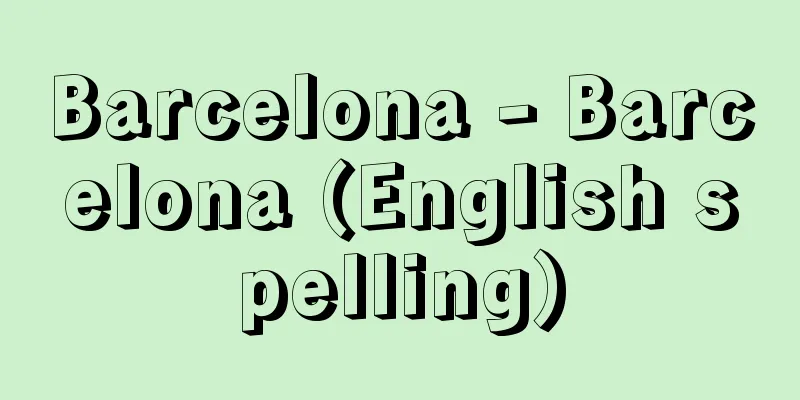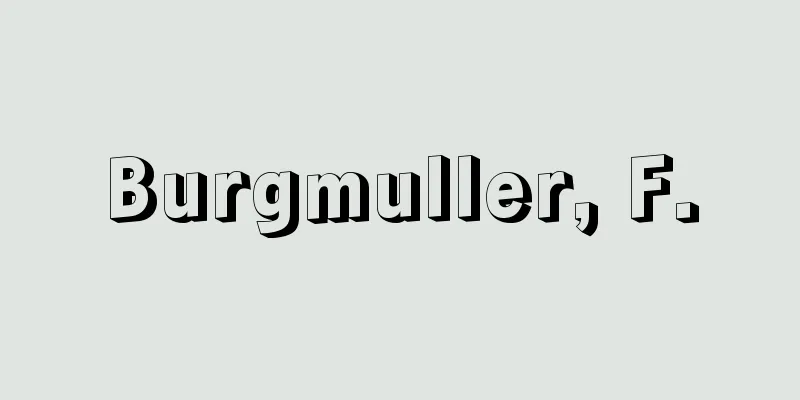Barcelona - Barcelona (English spelling)

|
It is the capital of Barcelona province in the northeastern part of Spain, in the Catalonia region. With a population of 1,503,884 (2001), it is the second largest city in Spain after the capital Madrid, but it is the largest industrial city in terms of the size of its port and commercial and industrial activity. It is the seat of the archbishopric, and is also home to the University of Barcelona, founded in 1450, and is the religious and cultural center of Catalonia. The city runs along the Mediterranean coast and is surrounded on three sides by hills, the highest of which is Mount Tibidabo (532 meters). The old town is laid out in a semicircle around the port, and the area around the Spanish Gothic cathedral (13th century) is called the Gothic Quarter. The central Rambla (several boulevards (ramblas)) runs north to south on the west side of this, and is lined with banks, trading companies, and high-end specialty shops. At the south end of the street, near the port, in Puerta de la Paz Square, stands a statue of Columbus, who died here. The wide avenue called Rondas, which surrounds the outside of the old town in a semicircle, is the remains of the city walls built during the time of the Kingdom of Aragon, which were demolished in 1860. Outside this is the new town, with its wide roads planned in an orderly grid pattern, providing a contrasting landscape to the narrow, winding roads of the old town. In the 20th century, the new city developed towards the Llobregat River in the southwest and the Besòs River in the northeast, and further east. Railways and major roads run along the valleys of both rivers. The coastal area, centered around the modern port, is a heavy industrial zone, with metal, automobile, aircraft, electrical equipment, and chemical industries. Cotton, wool, and man-made textile and paper industries are located in the valley of the Llobregat River. Rapid population concentration due to industrial development led to the creation of a regional plan in 1953, and the Greater Barcelona Metropolitan Area was established. In 1974, a metropolitan municipality was established, including 27 municipalities, and a new regional organization was created, with the aim of redeveloping saturated industrial areas and decentralizing industry. In 1992, the 25th Summer Olympic Games were held in the city. With its economic and cultural prosperity as a backdrop, Barcelona had its own customary laws and public systems, and in the 13th century in particular it established autonomy from the monarchy. With a tradition of civic self-governance, its own language (Catalan) and culture, it developed as the central city of the developed region of Spain. [Yutaka Tanabe and Yumiko Takizawa] historyIt began in the 3rd century BC when Carthage established a colony. The colony was called Barcino after the famous Carthaginian family, the Barca. After being ruled by the ancient Romans, the Visigoths, and Muslims, the Frankish Kingdom seized the area from Islam in 803 AD. At the end of the 9th century, it became independent from the Franks and became the County of Barcelona. In the mid-12th century, it merged with the Kingdom of Aragon, under which commerce and industry developed, and in 1283 it was granted city privileges. As the Kingdom of Aragon expanded overseas, it established trading posts not only in the Mediterranean but also in various parts of Atlantic Europe, dramatically expanding its trade area. However, in the 15th century, the spread of the Black Death caused a sharp decline in the population and the economy to decline. From 1463, there was a 10-year urban revolt against the royal authority, and in 1640, an independence revolt supported by France broke out against the royal authority, which had been trying to increase its financial burden. In addition, during the War of Spanish Succession that began in 1701, the city supported Archduke Charles of Habsburg, and was stripped of its city privileges after the victory of Philip V of the Bourbon family. In the second half of the 18th century, trade with the New World was liberalized, and commerce and industry boomed again. Although it stagnated temporarily due to the War of Independence and the Carlist Wars, it became Spain's number one industrial city. At the same time, the labor movement became more active, and in 1855, the first general strike in Spain took place, mainly among textile workers. In contrast to Madrid, where socialism was strong, the city subsequently became a base for anarchism and anarcho-syndicalism. The Catalan autonomy movement that arose at the end of the 19th century also joined, and in the 20th century it became a bastion of the left-wing movement and a melting pot of social movements. It played an important role in political history, with events such as the 1909 general strike against conscription, large-scale church burnings, the 1931 declaration of a republic ahead of Madrid, and the 1934 revolt of the Catalan autonomous government against the central government. During the Spanish Civil War in 1936, the area was successfully suppressed in the rebel forces, and in 1937 the central government was moved here. It remained under the control of the Republican side until the end of the civil war, but in 1939 it was occupied by Franco's side, effectively bringing the civil war to an end. [Jiro Nakatsuka] "Eyes on Catalonia: History, Society, and Culture" by Hirokazu Kabayama (1979, Tosui Shobo) [Reference] |A section of the old town that unfolds around the port. Narrow alleys that wind like a maze still retain the atmosphere of the Middle Ages. Barcelona, Spain © Kyoko Kamita "> Gothic Quarter A tall tower rising above the "Gate of the Nativity (Nativity Facade)" on the east side. Various sculptures are applied all over the facade. Part of the World Heritage "Works of Antonio Gaudi" (Spain, registered in 1984 and 2005) Barcelona, Spain ©Kyoko Kamita "> Sagrada Familia One of the representative buildings of Modernismo (Spanish Art Nouveau). It was created by architect Luis Domènech i Montaner. Part of the World Heritage Site "Palau de la Música Catalana in Barcelona and Hospital de Sant Pau" (Spain, registered in 1997 and 2008) Barcelona, Spain ©Kyoko Kamita "> Sant Pau Hospital Source: Shogakukan Encyclopedia Nipponica About Encyclopedia Nipponica Information | Legend |
|
スペイン北東部、カタルーニャ地方バルセロナ県の県都。人口150万3884(2001)は、首都マドリードに次いでスペイン第2位であるが、港湾の規模と商工業活動では第1位の産業都市。大司教座所在都市で、1450年創立のバルセロナ大学もあり、カタルーニャの宗教、文化の中心地でもある。市街は地中海岸に沿い、ティビダボ山(532メートル)を最高点とする丘陵に背後の三方を囲まれる。旧市街は港を中心に半円形に展開し、スペイン・ゴシック様式の大聖堂(13世紀)を中心とする一画はゴシック街とよばれる。この西側を南北に中心街ランブラス(いくつかの大通り(ランブラ)が連続する)が走り、銀行、商社、高級専門店などが並ぶ。通りの南端、港に近いプエルタ・デ・ラ・パス広場に、この地で死んだコロンブスの像が建つ。旧市街の外側を半円形に囲むロンダスとよぶ大通りは、アラゴン王国の時代に築かれた城壁を1860年に取り壊した跡である。これより外側は新市街で、格子状に整然と計画された広い道路が敷かれ、屈曲した狭い道路の旧市街と対照的な景観をみせている。 新市街は20世紀に入り、南西のリョブレガット川および北東のベソス川、さらにその東方へと発展した。鉄道、主要道路も両河川の谷沿いに延びている。近代的設備の整った港を中心とする海岸部は重工業地帯で、金属、自動車、航空機、電気機器、化学などの工業が立地する。木綿や羊毛、人造の繊維工業や製紙工業は、リョブレガット川の谷に立地している。工業発展による急速な人口集中により、1953年に地域計画がたてられ、バルセロナ大都市圏が定められた。1974年には27市町村を含む大都市圏自治体が設けられ、新しい地域編成がなされ、飽和状態にある工業地帯の再開発、工業の地方分散が図られている。1992年には第25回夏季オリンピック大会が開かれた。 経済的・文化的繁栄を背景に固有の慣習法や公共制度などを擁し、とくに13世紀には王権に対する自治を確立していたバルセロナは、市民自治の伝統、固有の言語(カタルーニャ語)・文化をもち、スペインの先進地域の中心都市として発展した。 [田辺 裕・滝沢由美子] 歴史紀元前3世紀にカルタゴが植民市を建設したことに始まる。カルタゴの名家バルカ家にちなんで、植民市はバルシノBarcinoとよばれた。古代ローマ、西ゴート人、イスラム教徒の支配を受けたのち、紀元後803年フランク王国がイスラムの手からこの地を奪った。9世紀末にフランクから独立してバルセロナ伯領となり、12世紀なかばにアラゴン王国と合併、そのもとで商工業が発展し、1283年に都市特権を得た。アラゴン王国の対外進出に伴い、地中海のみならず大西洋側ヨーロッパ各地に商務館を設け、貿易圏を飛躍的に拡大した。しかし、15世紀に至って黒死病の蔓延(まんえん)により人口が激減し、経済は衰退した。1463年から10年間にわたって反王権の都市反乱が、さらに1640年には財政負担強化を図った王権に対して、フランスの支援を受けた独立反乱が起こった。また、1701年に始まったスペイン継承戦争ではハプスブルク家カール大公を支持したため、ブルボン家フェリペ5世の勝利後、都市特権を剥奪(はくだつ)された。 18世紀後半に新大陸貿易が自由化されてふたたび商工業が活況を呈し、独立戦争やカルリスタ戦争などで一時停滞したものの、スペイン第一の工業都市となっていった。これと並行して労働者運動が活発となり、1855年に繊維労働者を中心に、スペインで最初のゼネストが行われる。社会主義の強いマドリードとは対照的に、以後はアナキズム、アナルコ・サンジカリズムの拠点となった。19世紀末におこったカタルーニャ自治運動も加わり、20世紀には左翼運動の砦(とりで)、社会運動のるつぼと化す。1909年の徴兵反対ゼネストや大規模な教会焼打ち、1931年のマドリードに先んじた共和政宣言、1934年の中央政府に対するカタルーニャ自治政府の反乱など、政治史のうえで重要な役割を果たした。1936年のスペイン内戦では反乱軍の鎮圧に成功し、1937年には中央政府がここに移され、内戦末期まで共和国側の支配地域であったが、1939年フランコ側に占領され、内戦は事実上終結した。 [中塚次郎] 『樺山紘一著『カタロニアへの眼――歴史・社会・文化』(1979・刀水書房)』 [参照項目] |港を中心に展開する旧市街の一画。狭い路地が迷路のように入り組み、中世の雰囲気をいまも残している。スペイン バルセロナ©Kyoko Kamita"> ゴシック街 東側の「降誕の門(生誕のファサード)」の上にそびえる高塔。ファサードの至る所にさまざまな彫刻が施されている。世界文化遺産「アントニオ・ガウディの作品群」の一部(スペイン・1984、2005年登録) スペイン バルセロナ©Kyoko Kamita"> サグラダ・ファミリア教会 モデルニスモ(スペイン版アール・ヌーボー)の代表的建築の一つ。建築家ルイス・ドメネク・イ・モンタネルの作である。世界文化遺産「バルセロナのカタルーニャ音楽堂とサン・パウの病院」の一部(スペイン・1997、2008年登録) スペイン バルセロナ©Kyoko Kamita"> サン・パウ病院 出典 小学館 日本大百科全書(ニッポニカ)日本大百科全書(ニッポニカ)について 情報 | 凡例 |
<<: Rzeka Warta (English spelling)
>>: Haruzemi (spring cicada) - Terpnosia vacua
Recommend
Konstantin Pavlovich
…At that time, the Grey Cabinet, known in England...
Al-Jabartī, `Abd al-Raḥmān ibn Ḥasan
Born: 1753. Cairo [died]1825/1826. Cairo Egyptian ...
Magnesium - Magnesium (English spelling)
It belongs to group 2 of the periodic table and i...
Oshigoromo - Ushinchi
…After the Meiji period, upper-class men rapidly ...
Chrismon
A monogram (combination of letters) meaning Christ...
brown goldfish
...A closely related species lacking a dorsal fin...
ISA - Hello
This is a bus standardized by IEEE based on the AT...
Irony
Irony is a term used to describe a person's ac...
Kinmon - Gold inscription
〘Noun〙 A text containing wise sayings. Also, a sut...
Cystidia truncangulata (English spelling)
…[Hiroshi Inoue]. … *Some of the terminology that...
Principal axis transformation
Given the quadratic formula f ( x , y ) = ax2 + 2...
Fernling
...Monadnock, proposed by geomorphologist WM Davi...
Listed products - jojoshohin
Commodities that are traded on the commodity excha...
Funambulus pennanti (English spelling) Funambuluspennanti
…[Yoshiharu Imaizumi]. … *Some of the terminology...
Hayabusa (Falcon) - Hayabusa
A bird of the falcon family. It has a wingspan of ...









